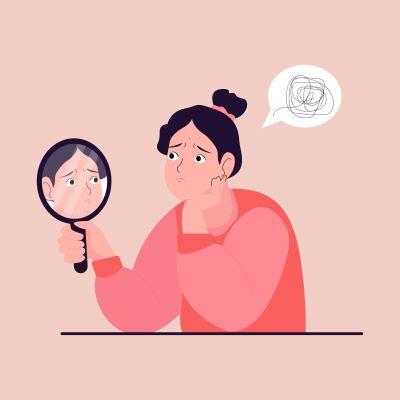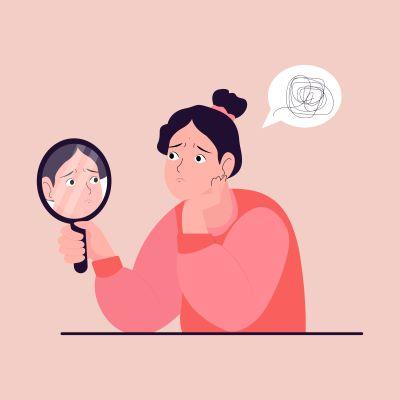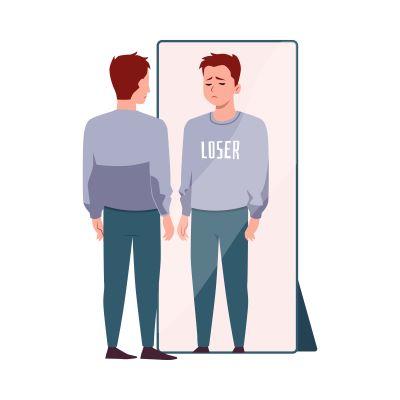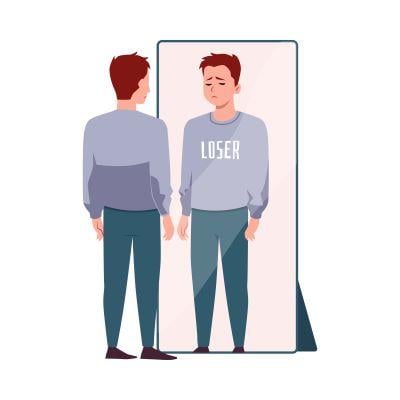Body Dysmorphic Disorder (BDD) and Men: What to Know and How it Differs
Body Dysmorphic Disorder (BDD) and Men: What to Know and How it Differs
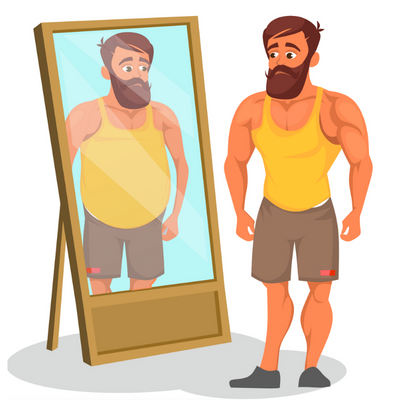
“The individual fears that (they) have become deformed or might become deformed, and experiences at this thought a feeling of inexpressible disaster.”
- Dr. Enrico Morselli, 1891
It’s Not Greek to Me
The word ‘dysmorphia’ comes from the Greek, meaning misshapen or ugliness. One of the first known references to Body Dysmorphic Disorder (BDD) dates back to the late 1800s when a French psychiatrist called it ‘l’obsession de la honte du corps.’ Pierre Janet’s description of the condition as an unhealthy preoccupation with not just the look, shape, or feel of one’s body or a specific part, but the shame one experiences in the appearance of their body, or a certain aspect of it, really hits the mark.
BDD is a chronic condition that can be debilitating, disrupting various aspects of the person’s day-to-day life for years, and while cultural and societal factors (like social media) certainly exacerbate symptoms at times, they are not causal factors. People who suffer from BDD are obsessively concerned with what they perceive as defects or perversions in their appearance. The obsessions can focus on a specific part – like the head or nose or arms – or they can be irrational concerns over the size of one’s ears or neck. Compulsive behaviors like looking excessively in a mirror or at one’s reflection, searching relentlessly online for remedies, camouflaging the part of the body that causes them distress, or asking people close to them an unreasonable number of times if they see the problem are common external symptoms.
Men, in particular, might focus on their height, or the size or shape of their muscles or penis, or even, as it was in my case, their hair. My chronic obsession that my hair was thinning and would all fall out resulted in significant depression and anxiety. I would engage in compulsive behaviors for hours. When I was younger, I wore my hair long to avoid having to see the spots that I thought were thinning. First showing symptoms of BDD at 19 years of age, it wasn’t until I was 40, and also a mental health therapist, that I was properly diagnosed. For many years, I thought it was a phobia or OCD, until I read an article on BDD and realized there was a name for the condition. Eventually, I was able to manage my symptoms through Cognitive Behavioral Therapy (CBT), but more significant progress came through trauma work and exposure therapy. Even writing my book, Body Dysmorphic Disorder, Mine and Yours: A Personal and Clinical Perspective, helped me gain insight and information not just for my patients, but for my own healing journey.
What is BDD And How Does BDD Affect Men?
While it’s human nature at times to be concerned or even slightly obsessed with one’s appearance or a certain aspect of the body that one is not happy with, it is not something that usually causes great distress or disruption in daily life. People with BDD are truly tormented by feelings of disgust, ugliness, and shame. They might stop working, skip school, have difficulties with friends and other valued relationships, or try to self-medicate.
Men are more likely than women to abuse substances and if this is the case, the substance use must be addressed before much progress can be made with their BDD. With men, we often see a subcategory of BDD referred to as muscle dysmorphia (MD) and while women can suffer from it as well, it is more common that men with MD are overly concerned with their body build. Feeling the body mass is too slight, they exercise excessively, sometimes to the point of injury, and might engage in dangerous use of steroids or supplements. (More on BDD in men)
I see a lot of teens with BDD and that’s not uncommon as this disorder often starts in the adolescent years when hormonal changes, school, social issues and becoming more independent all play important roles in their lives. But kids who don’t have BDD get over the normal awkwardness or discomfort of puberty and growing up without too much intervention, if any. Unfortunately, most teens who suffer from BDD aren’t seeking therapy as they may not even understand or fully grasp the implications of their situation and just want a quick fix to whatever it is they perceive as defective in their appearance. It is usually a parent or caregiver who is worried that a youth is obsessively concerned about their body.
BDD affects men and women equally, and the condition is more common than one might think. It is estimated that about five to 10 million people in the United States suffer from it and yet, it is often misdiagnosed or goes untreated. Sadly, there is a high suicide rate among people with BDD, with about 25 percent attempting suicide and about 0.3% dying from their attempts.
Going Beyond Appearances: Plastic Surgery Rarely Helps
You can’t fix a psychiatric problem with plastic surgery. BDD is a perceptual issue, linked to irrational emotions and feelings. Someone with the disorder may pursue surgery or some procedure to alter or change their “flaw”, but it usually does not resolve anything. People with BDD often see a dermatologist or plastic surgeon first, and best-case scenario, that practitioner will recognize the condition, or something won’t sit well with the doctor, and refers the patient to a therapist.
One of the most tragic things I come across is when people have plastic surgery, regret it, and wish the body part looked the way it did before the procedure. Then they go for reparative surgery. I understand that it doesn’t make any sense, due to the psychological nature of their condition, but it speaks to the absolute desperation patients feel, even knowing that statistics show a very low satisfaction rate.
Not Just OCD: Treatment for BDD
BDD and OCD are often compared but a major difference is that people with BDD strongly believe that they have a real flaw, and that flaw makes them a disgusting or awful human being. The factor of insight that most people with OCD have – that what they are thinking and doing doesn’t make sense, but they cannot stop it – is often poor in BDD sufferers. While both may feel internal torment and a sense of perceived control, people with BDD struggle with a deep-rooted feeling of shame. Sometimes to the point that they are in therapy or receiving treatment for depression or anxiety, but they are too ashamed to bring up their body (part) concerns.
However, there is a lot of overlap between OCD and BDD and treatment can take a similar approach. Cognitive Behavioral Therapy is a primary treatment for both, helping patients better understand their behavior patterns and learning to think from a different perspective to change them. Exposure Therapy – exposing them in a supported way to the discomfort they are feeling to help lessen their anxiety – plays a major role in both the management of OCD and BDD but one contributing factor that a lot of clinicians overlook in BDD is the backstory.
In OCD therapy, we put little emphasis on understanding why someone has developed some form of the disorder. We know that it is primarily a neurobiological problem that responds well to CBT, especially exposure therapy. But we know far less about BDD. Research on BDD lags about 25 years behind OCD and while I believe there is likely some neurobiological component that leaves people susceptible to BDD, a well-known study shows that about 80 percent of people with BDD have had some difficult experience with childhood whether maltreatment, neglect, bullying or teasing, or worse – physical or sexual abuse. And that is an important element that a lot of clinicians miss.
Addressing Trauma and Shame
To not address the shame that surrounds a person with BDD is to not really make much progress with the disorder for that person. It is also one of the hardest aspects of BDD to get patients to talk about but it’s an important part of treatment. In therapy, I focus on the distress that shame causes and helping the person understand how and why they developed BDD, that the disorder doesn’t just develop out of the blue. And trauma can be a major factor in people with BDD so looking at their trauma and helping the person gain insight to that is essential.
As a therapist, I accept my patients’ beliefs and convictions about the world around them, but to help them change their thinking so that they can manage their BDD effectively, I also have to be forthright with them. As someone with BDD, I have more than a clinical perspective. I have empathy for the deep level of torment it creates, and intrinsically understand, especially as a man, the shame, stigma and agony that comes with it. But I also tell my patients that if they are having such distressing thoughts about their appearance to the point that they contemplate suicide, then it is pathological. They agree, but their situation speaks to the deep shame they feel and possible trauma they may have experienced.
The ”feeling of inexpressible disaster” that the Italian doctor, Enrico Morselli, wrote about more than 130 years ago is very real in people with BDD, even if it doesn’t make sense. But someone with BDD does not have to remain what Morselli called “a veritably unhappy individual” anymore. There is support, compassion, treatment, and progress out there. I know because I experienced it.




